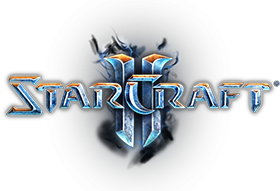ZAM's Starcraft 2 Race Guides: Zerg
The powerful Zerg are one of the best at making unit transitions and playing macro heavy games
Hello and welcome back to ZAM's Starcraft 2 race overviews, where I've decided to do some quick coverage of the three races in SC2, including some of the most commonly used strategies that I've gone up against while playing in Diamond League (which was formerly known as Platinum League, pre-patch 13). We've already covered the Protoss, which you can check out here, so let's get right into it with the Zerg!
Zerg
The Zerg are often considered to be the race requiring the highest amount of macro management skill, as well as being the most flexible of the three races. One of the Zerg's most unique, and often frustrating, features is having that all important Hatchery and the spawn larvae that come with it. This stems mostly from the fact that spawn larvae come out rather slowly, and since these little worms are, literally, the source of all Zerg unit creation, good Zerg players must learn early on to manage their larvae, ensuring that they have the right amount of larvae to produce the right units at a moment's notice.

Of course, this also contributes to the Zerg's incredible flexibility when it comes to making game transitions. For Terran and Protoss, if you want to make that big transition to stronger units, you need to erect that unit producing building, and even then, you need to wait while the units are being produced. Often times, even if the Terran or Protoss player erects multiple buildings (which are expensive, remember!), this can mean that they must spend at least a few minutes making that transition, including the time it takes to get those slow-making units out (even if the Protoss player is chrono boosting his buildings).
All Zerg require is that one building needed to unlock the life form, and then they can pump out a good number of units (depending on the number of expansions the Zerg has, and if he's been using his Queen's Spawn Larva ability well) in the time it takes to create the unit. Not only is this much cheaper, from a building standpoint, but if a player lets the Zerg expand too much, the sheer number of spawn larvae available can mean that the Zerg can, literally, replenish their entire army at a moment's notice. It's this flexibility that really helps the Zerg, and given their speed bonus on creep, a good Zerg who is building proper "creep highways" (as in using creep tumors to link up their hatcheries) can mobilize and re-assemble his or her army virtually at will.
With that being said, there are a number of strategies available to the Zerg at any given point in time, but with Hydralisks being so strong right now (in conjunction with Roaches falling out of favor with many Zerg players), many Zerg strategies simply revolve around hitting that critical mass of Hydralisks that can gobble up virtually any army.


